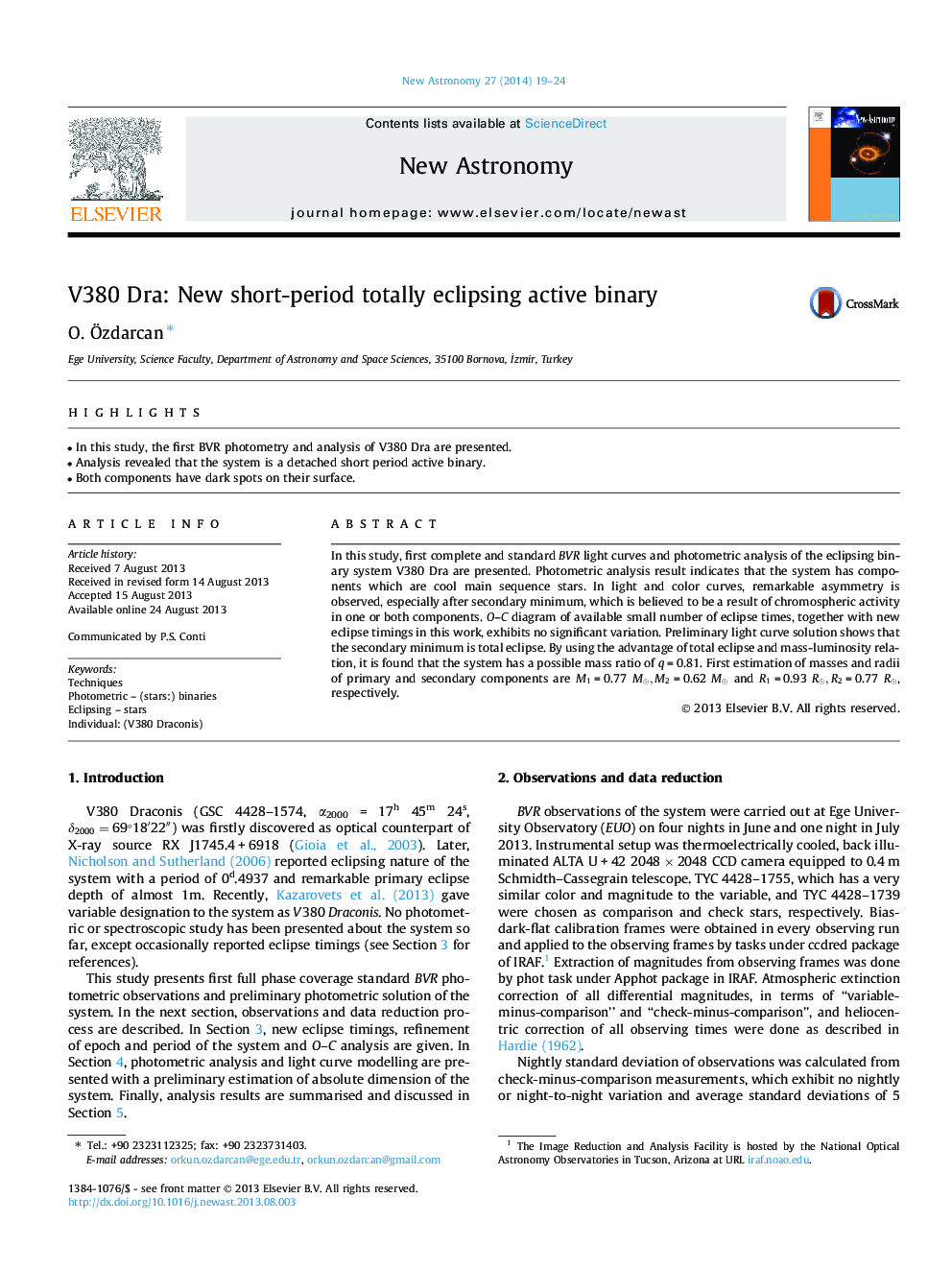| Article ID | Journal | Published Year | Pages | File Type |
|---|---|---|---|---|
| 1779046 | New Astronomy | 2014 | 6 Pages |
•In this study, the first BVR photometry and analysis of V380 Dra are presented.•Analysis revealed that the system is a detached short period active binary.•Both components have dark spots on their surface.
In this study, first complete and standard BVR light curves and photometric analysis of the eclipsing binary system V380 Dra are presented. Photometric analysis result indicates that the system has components which are cool main sequence stars. In light and color curves, remarkable asymmetry is observed, especially after secondary minimum, which is believed to be a result of chromospheric activity in one or both components. O–C diagram of available small number of eclipse times, together with new eclipse timings in this work, exhibits no significant variation. Preliminary light curve solution shows that the secondary minimum is total eclipse. By using the advantage of total eclipse and mass-luminosity relation, it is found that the system has a possible mass ratio of q = 0.81. First estimation of masses and radii of primary and secondary components are M1M1 = 0.77 M⊙,M2M⊙,M2 = 0.62 M⊙M⊙ and R1R1 = 0.93 R⊙,R2R⊙,R2 = 0.77 R⊙R⊙, respectively.
